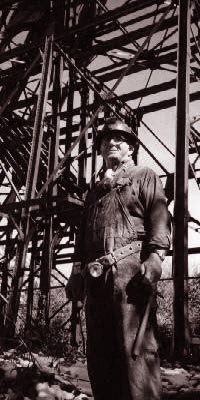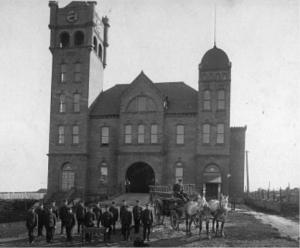Heritage Area
In the late 1660's, with beaver hats the rage in Europe, Native Americans and French and English fur traders, traveled through Iron County on the Flambeau Trail, linking European markets to the much desired Northern Wisconsin commodity. Native Americans traded locally-mined copper internationally via this wilderness "highway" trail.
The 1800's brought the lumbermen, and Iron County's white pine resources provided valuable lumber needed to build homes in growing industrial cities. Railroad logging, developed by timber barons like William Roddis, next moved hardwoods to waiting mills. As the timber was exhausted, lumber companies converted their land holdings to capture more revenues. Where there were lakes, resorts sprang up in the cutover, providing destinations for city vacationers. Immigrants, eager to farm their own land, settled the cutover.
Iron County's iron mining history had a unique and profound impact. "Red Gold" drew immigrants here since the 1880's, to mine the iron ore needed by a growing industrial America. Through the extraction of iron from the hills of Northern Iron County's Penokee Range, Wisconsin made significant contributions to the fast moving industrial revolution of the world, particularly in production of steel building materials and automobiles. By the mid 1960's, iron mining ceased and Iron County turned to another natural resources to establish a new place in Wisconsin history. Combining its hilly topography, with its abundant 200 inches of annual snow, Iron County turned to tourism, successfully establishing itself as a major downhill skiing and snowmobiling destination in Wisconsin and the Midwest. Today, Iron County's natural and historic resources make it an important four-season tourism destination in Wisconsin.



